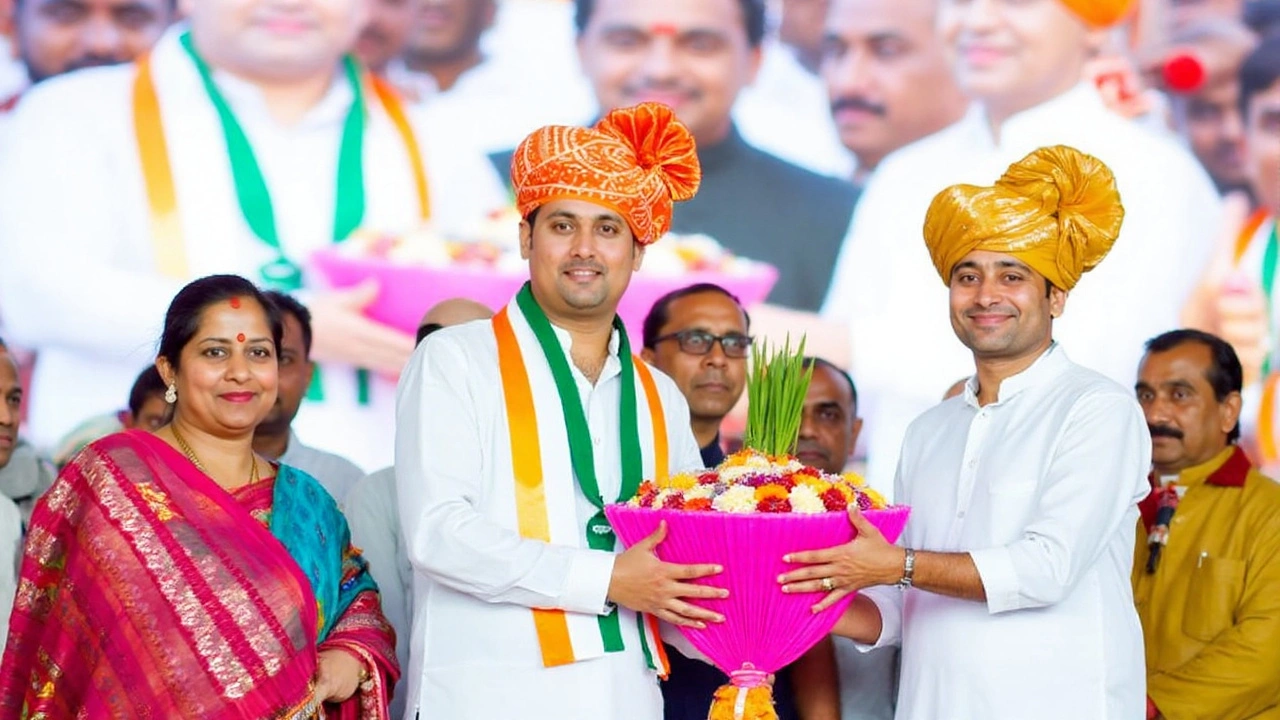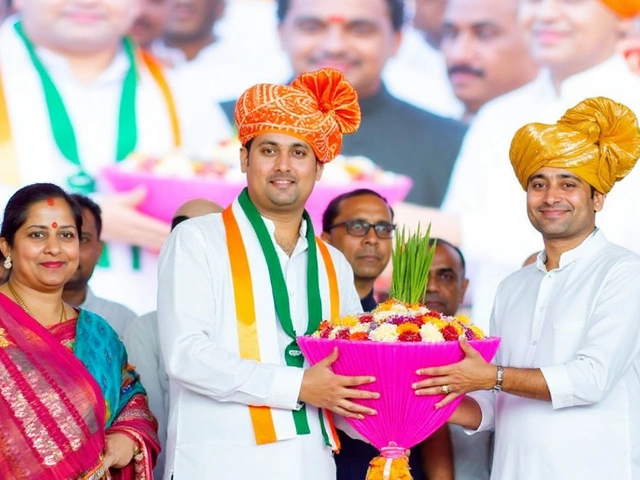A high-profile defection narrows Congress space in Kolhapur
On August 25, 2025, Rahul Patil walked onto a stage in Sadoli, Kolhapur, and switched sides. The former Congress candidate from Karvir joined Deputy Chief Minister Ajit Pawar’s Nationalist Congress Party (NCP), handing the ruling alliance a timely boost before Maharashtra’s long-awaited local body elections. Ajit Pawar welcomed him personally, flanked by Medical Education Minister Hasan Mushrif and district president Babasaheb Patil Asurlekar. Rajesh Patil, a director of the district bank, joined too—quietly signaling that this wasn’t just a photo-op but a push into the cooperative power grid that shapes politics in this belt.
Patil isn’t a stray name on a list. He is the son of the late P.N. Patil (Sadoli), a Congress veteran known across Kolhapur’s rural blocks, sugar factories, and the sprawling network of cooperatives. In 2024, Rahul Patil fought the assembly race from Karvir and lost to Shiv Sena’s Chandradeep Narake. That loss didn’t sink his stock. It made him a free agent with a recognizable surname and ready-made booth networks—assets any party wants before local polls.
Ajit Pawar’s message at the ceremony was simple: he trusts Patil’s ground game and expects an immediate lift in Kolhapur. He even played on political symbolism. Baramati—the old axis—once defined alliances; now, he said, it’s Katewadi (his family’s base) and Sadoli, signaling that his camp intends to root itself deeper in western Maharashtra, not just administer it from Pune.
The timing matters. Maharashtra’s local bodies—from Zilla Parishads and Panchayat Samitis to municipal corporations—are headed for polls after years of delays linked to ward changes and reservation litigation. In districts like Kolhapur, these elections rarely hinge on TV debates. They are decided in sugar cooperative meetings, village loan committees, and tehsil-level tussles—places where who controls the district bank, who can mobilize transport on polling day, and who can get last-mile welfare benefits delivered all count more than slogans.
That’s why Rajesh Patil’s presence on stage was not cosmetic. District banks are the bloodstream of rural credit, intertwined with sugar mills, transport bodies, and milk unions. When a district bank director moves with a local face like Rahul Patil, it signals the possible realignment of members, delegates, and boardrooms—precisely the ecosystem that feeds candidates and turnout in local body polls.
For the Congress, this is a tough punch in a district it once navigated with ease. Kolhapur has stayed competitive despite national currents, and Congress leaders have often relied on a mix of caste coalitions, cooperative influence, and legacy networks to stay relevant. Losing Patil doesn’t just cost a candidate; it dents the party’s claim to continuity in a post-2024 landscape where every functional booth unit and each sarpanch’s support can swing a ward.
Ajit Pawar’s NCP operates as part of the state’s ruling alliance alongside the BJP and Chief Minister Eknath Shinde’s Shiv Sena. Within that power structure, Hasan Mushrif has grown into the alliance’s key operator in Kolhapur. Bringing in Patil strengthens that cluster. Expect it to translate into more leverage on ticket distribution and coordination across Zilla Parishad and municipal wards.
Patil’s pitch to his new party will be straightforward: he can convert pockets that still idolize his father, soothe local egos that feel overlooked, and reactivate workers who drifted after 2024. He also knows the defeats. Losing to Narake taught him where the gaps were—especially in urban fringes of Karvir and booths where Sena’s cadre movement outpaced Congress. Ajit Pawar’s team will try to plug those with tighter beneficiary outreach and alliances at the village society level.
The Congress, for its part, will likely double down on two things: rebuilding cadre morale and framing the switch as opportunistic. But the ground reality is more complex. Many mid-level leaders in western Maharashtra are reading the same map: in a post-split environment, ideological lines blur under the pressure of who delivers on tenders, funds, and cooperative appointments. That often decides where a local neta goes—far more than who they appeared with on posters last year.
Kolhapur’s political story has always been woven into its cooperative economy. Sugar factories bring jobs, trucks, contracts, and clout. Control those, and you control who shows up at the booth. With that in mind, the NCP’s gain is not just a headline. It’s an increase in negotiating power inside the alliance, ward by ward.
If you zoom out, this switch fits a familiar Maharashtra pattern. Leaders move when they see momentum and protection. Ajit Pawar’s camp offers administrative access and a growing bench in western Maharashtra. Congress promises legacy and opposition space but has struggled to convert sentiment into tight booth management since 2024. In that tussle, a name like Rahul Patil can tilt micro-battles: village markets, bus unions, cooperative societies, and ward committees.
So what changes immediately? Expect quick shifts in candidate lists across Kolhapur’s local bodies. In some wards, NCP’s Ajit-led faction may field fresh faces backed by Patil’s network; in others, they might push for friendly candidates from alliance partners while steering resources from behind the scenes. On the Congress side, expect an urgent hunt for a replacement face in Karvir and neighboring blocks, likely someone with cooperative stakes rather than a purely urban profile.
The real test will be turnout engineering. The alliance will try to fuse BJP’s digital machinery with NCP’s rural mobilizers and Sena’s block-level workers. Congress and its partners will rely on long-running relationships in unions and village councils. The difference between winning and losing a ward here can be a single sugar society chairman switching sides or a transport association agreeing to a bulk get-out-the-vote plan.
Why this switch matters now—and what to watch
The state’s poll calendar is packed. Several municipal corporations, councils, and rural bodies are expected to vote in phases. With OBC reservation restored and delimitation done in most pockets, parties are rushing to plant their flags early. In that scramble, profile and logistics beat ideology. Patil gives the alliance both—a surname people know and a machine that can move workers, vehicles, and messages.
In Kolhapur, three dynamics will decide how big this move becomes:
- Caste and cooperative alignments: Whether Patil can pull key cooperative board members—especially from sugar and milk unions—toward the alliance slate.
- Ticket bargains: How many winnable wards NCP secures within the alliance, and whether it can avoid clashes with BJP and Sena cadres.
- Congress’s counter: Whether Congress can quickly elevate a fresh local face with credible backing in the same cooperative circuits.
Ajit Pawar framed the moment as a relationship reset—from Baramati to Katewadi to Sadoli. In plain terms, he’s telling western Maharashtra that his camp now owns the organizational muscle once tied to the Pawar family brand across the belt. If that message sticks beyond the stage lights and into the sugar belt’s boardrooms, the alliance will go into local polls with a wider rural runway.
For voters, this will look less like a marquee clash and more like a grind. Expect focused campaigns around water schemes, road repairs after monsoon damage, and school infrastructure—bread-and-butter issues that decide local bodies. The side that aligns these promises with last-mile delivery—loans, subsidies, medical camps—will likely take control of key committees.
One last point: Kolhapur’s politics punishes complacency. Big arrivals create buzz, but sustaining it needs ground checks—attendance in gram sabhas, visits to sugar weighbridges, even quick fixes on potholes when rains hit. If Rahul Patil translates ceremony into consistent presence, his move could ripple far beyond Sadoli. If not, the district will quickly move on, as it often does, to whoever turns up when the village calls.





